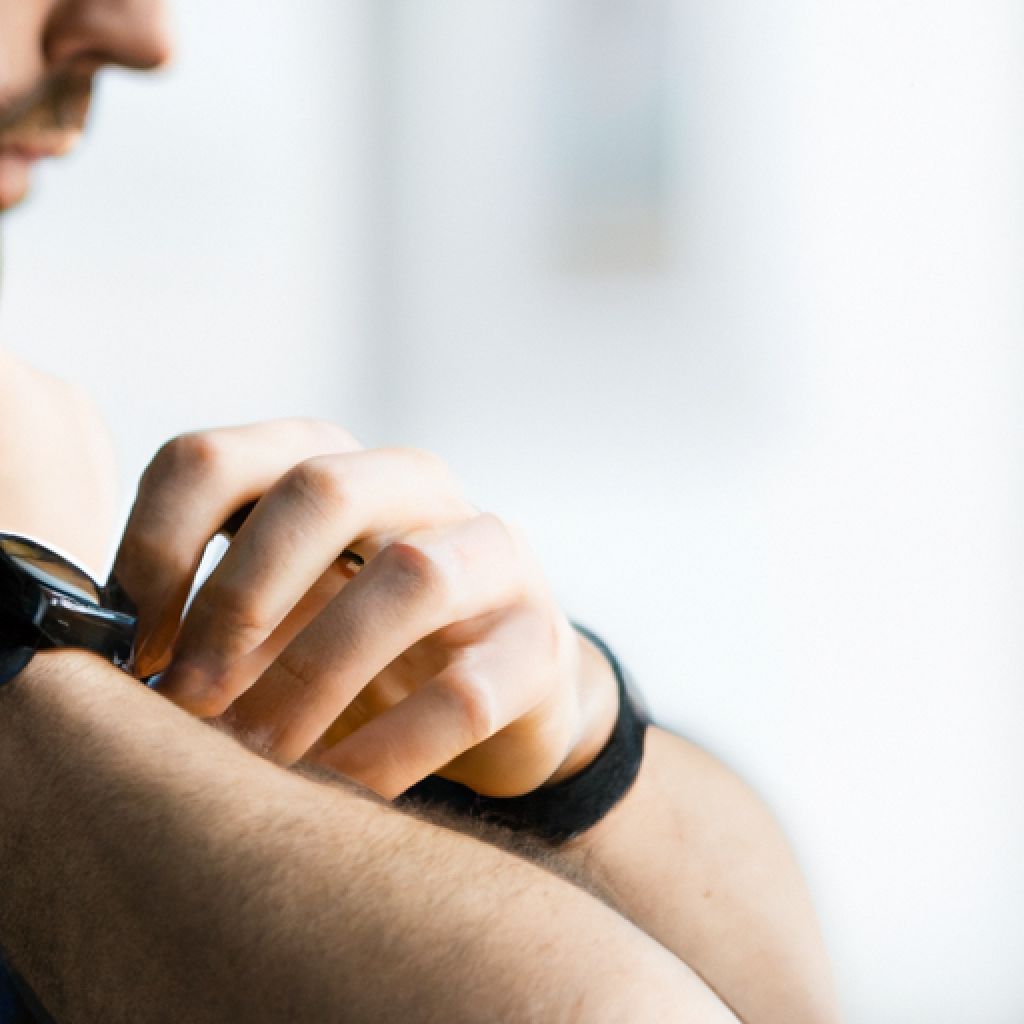What Are The 4 Wearable Devices?

So, you’re curious about wearable devices, huh? Well, let me tell you, they’re all the rage these days. From fitness trackers to smartwatches, these nifty gadgets have become must-haves for tech enthusiasts and health-conscious folks alike. But what exactly are the four main types of wearable devices? Stay tuned, because I’m about to give you the lowdown on these trendy tech accessories that are taking the world by storm.

Understanding Wearable Technology
Wearable technology has become increasingly popular in recent years, revolutionizing the way we live, work, and stay connected. It refers to electronic devices that can be worn on the body, typically as accessories or clothing items, and are designed to enhance our daily lives. These devices are capable of collecting data, tracking activity, and providing valuable insights into our health and wellness. In this article, we will explore the different types of wearable devices, their features, and their impact on our lives.
Fitness Trackers
Fitness trackers are perhaps the most well-known and widely used wearable devices. These devices are designed to monitor various aspects of our physical activity and help us stay fit and healthy. The specific features of fitness trackers can vary depending on the brand and model, but some common features include step counting, heart rate monitoring, sleep tracking, and calorie expenditure tracking.
Popular fitness tracker brands and models include Fitbit, Garmin, and Apple Watch. Each brand offers a range of models with different features and price points, catering to a wide range of user preferences. These devices can be worn on the wrist like a watch, making them convenient and easy to use.
Fitness trackers play a significant role in contributing to our overall health and wellness. By tracking our activity levels, heart rate, and sleep patterns, these devices provide us with insights into our lifestyle habits. They motivate us to stay active by setting goals and providing real-time feedback, encouraging us to make healthier choices in our daily lives.
Smartwatches
Smartwatches combine the functionality of a traditional wristwatch with advanced features that allow us to connect and interact with our smartphones and other devices. The primary functions of smartwatches include receiving and making calls, sending and receiving messages, accessing notifications, and controlling various apps and features on our smartphones.
Various smartwatch brands are available in the market, including Apple Watch, Samsung Galaxy Watch, and Garmin Vivoactive. Each brand offers a unique set of features and designs, catering to different user preferences. Smartwatches can be customized with different watch faces, straps, and bands, allowing users to personalize their devices.
In addition to their connectivity features, smartwatches can also be used as health monitoring devices. Many models now include features such as heart rate monitoring, sleep tracking, and activity tracking, allowing users to keep track of their fitness goals and overall well-being. Some smartwatches even have built-in GPS functionality, which can be used for tracking outdoor activities such as running or cycling.
Head-Mounted Displays
Head-mounted displays (HMDs) are wearable devices that are worn on the head, typically in the form of goggles or glasses, and provide a virtual or augmented reality experience. These devices immerse the user in a digital environment, either fully virtual or a combination of virtual and real-world elements.
HMDs are commonly used in the field of virtual reality (VR) and augmented reality (AR). In VR, the user is completely immersed in a virtual world, while in AR, virtual elements are overlaid onto the real world. Examples of popular HMDs include the Oculus Rift, HTC Vive, and Microsoft HoloLens.
These devices have numerous applications, ranging from gaming and entertainment to education, training, and simulation. In the gaming industry, HMDs provide an immersive and interactive experience, allowing players to feel like they are part of the game. In fields such as education and training, HMDs can simulate real-world scenarios, enabling users to practice and learn in a safe environment.

Body Cameras
Body cameras are wearable devices that are typically worn by law enforcement personnel, security officers, and other professionals who require video and audio recording capabilities. These devices are typically attached to the user’s clothing or equipment and capture a first-person perspective of their surroundings.
The main function of body cameras is to provide an objective and unbiased record of events, ensuring transparency and accountability. Body cameras can play a crucial role in law enforcement by documenting interactions between officers and the public, providing valuable evidence for investigations and legal proceedings.
Different brands and models of body cameras are available, including Axon, Motorola, and GoPro. These devices vary in terms of recording quality, battery life, storage capacity, and other features. Some body cameras also have built-in GPS tracking, allowing for location data to be recorded along with the video footage.
Interconnectivity of Wearable Devices
One of the key aspects of wearable technology is its ability to connect and communicate with other devices. Bluetooth and Wi-Fi are the primary technologies used for interconnectivity in wearable devices. Bluetooth allows for wireless communication between devices in close proximity, while Wi-Fi enables connectivity to the internet and other devices over a broader range.
Synchronizing wearable devices with mobile apps is a common practice that allows users to access and analyze their data on their smartphones or tablets. Many wearable devices have corresponding apps that provide a user-friendly interface for viewing and managing the collected data. These apps often offer additional features such as goal setting, progress tracking, and social sharing, enhancing the overall user experience.
The concept of the Internet of Things (IoT) also plays a significant role in wearable technology. IoT refers to the network of interconnected devices that can communicate and share data with each other. Wearable devices can be considered as part of this larger IoT ecosystem, enabling seamless integration with other smart devices in our homes and workplaces.

Benefits of Wearable Devices
Wearable technology offers numerous benefits that can greatly impact our lives. From a health perspective, these devices can help us track our physical activity, monitor our heart rate, and analyze our sleep patterns, allowing us to make informed decisions about our fitness and well-being. By promoting a more active and healthy lifestyle, wearable devices can contribute to the prevention of chronic diseases and the improvement of overall health outcomes.
Beyond health benefits, wearable devices also have the potential to improve productivity. For example, smartwatches allow us to stay connected and access important information without the need to constantly check our smartphones. This can be particularly beneficial in professional settings, where quick and discreet access to notifications and messages is essential.
Furthermore, wearable technology offers convenience and ease of use. Whether it’s a fitness tracker worn on the wrist or a smartwatch on the arm, these devices are designed to be portable, lightweight, and comfortable to wear. They eliminate the need to carry around bulky gadgets or constantly reach for our phones, allowing us to stay connected and informed with minimal effort.
Challenges and Limitations of Wearable Devices
While wearable devices offer many benefits, they also come with certain challenges and limitations. One of the main concerns is the issue of security and privacy. With wearable devices collecting and transmitting personal data, there is a risk of unauthorized access and misuse. Manufacturers and developers must prioritize robust security measures to protect user information and ensure data integrity.
Another limitation of wearable devices is their reliance on battery power. Many devices have limited battery life, requiring frequent recharging. This can be inconvenient, especially for individuals who rely heavily on their devices throughout the day. Additionally, the durability of wearable devices can be a concern, as they are constantly exposed to physical activity, sweat, and other environmental factors.
Cost is another factor to consider when it comes to wearable devices. While prices have become more affordable in recent years, high-end models with advanced features can still be quite expensive. This makes it important for consumers to carefully consider their needs and budget before investing in a wearable device.

Future of Wearable Technology
The future of wearable technology looks promising, with continued advancements and innovations on the horizon. One of the upcoming trends in wearable technology is the integration of artificial intelligence (AI). AI algorithms can analyze the data collected by wearable devices and provide personalized insights and recommendations. This can potentially revolutionize the way we approach our health and wellness, allowing for more targeted and effective interventions.
Furthermore, wearable devices are expected to play a crucial role in future healthcare. These devices can monitor vital signs, detect abnormalities, and transmit real-time data to healthcare professionals, enabling early intervention and proactive healthcare management. This can lead to improved patient outcomes, reduced healthcare costs, and increased accessibility to healthcare services.
Choosing the Right Wearable Device
When it comes to choosing a wearable device, there are several factors to consider. First and foremost, it is important to determine the specific purpose and intended use of the device. Different wearable devices cater to different needs, whether it’s fitness tracking, communication, or immersive experiences. Understanding your requirements will help you narrow down your options and find the right device for you.
Compatibility with other devices is another crucial consideration. Some wearable devices are designed to work seamlessly with specific operating systems or platforms, while others offer broader compatibility. It is essential to ensure that your chosen device is compatible with your existing devices, such as smartphones, tablets, or computers, to ensure a seamless user experience.
Finally, it is important to strike a balance between essential features and additional features. While advanced features can be appealing, they often come with a higher price tag. Consider which features are essential for your needs and prioritize them when making your decision. It is also worth considering factors such as design, comfort, and durability to ensure a device that suits your personal preferences and lifestyle.
In conclusion, wearable technology has become an integral part of our daily lives, offering a wide range of possibilities and benefits. From fitness trackers that help us stay active and monitor our health to smartwatches that keep us connected and productive, wearable devices have reshaped the way we interact with technology. As the technology continues to evolve and advance, we can expect even greater integration and innovation, ultimately leading to a future where wearable devices become an indispensable part of our lives.








